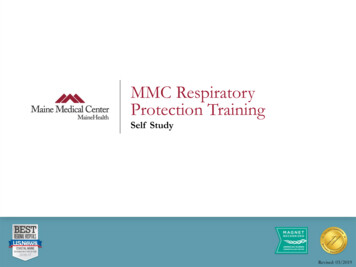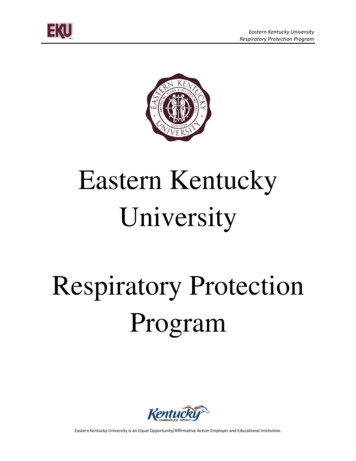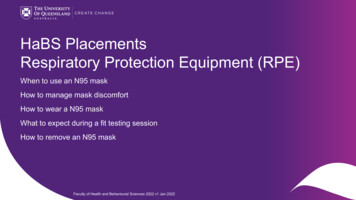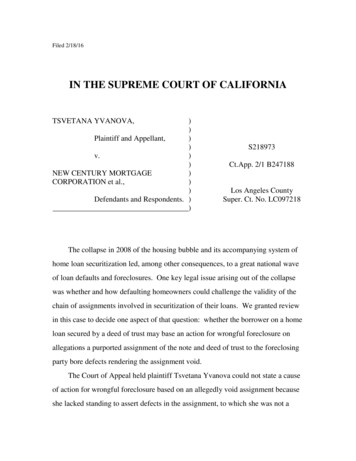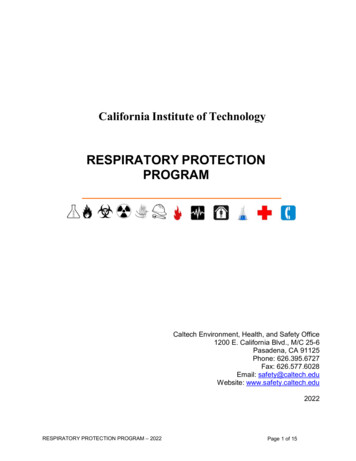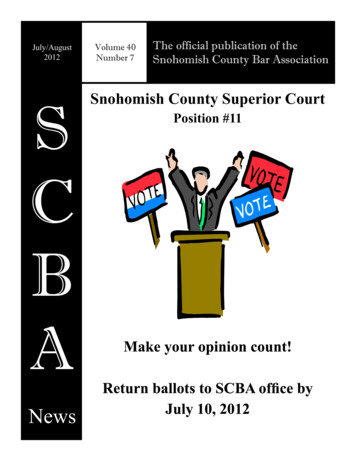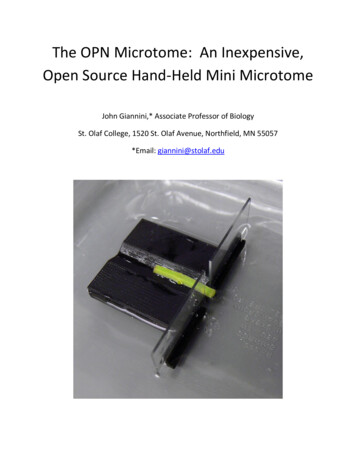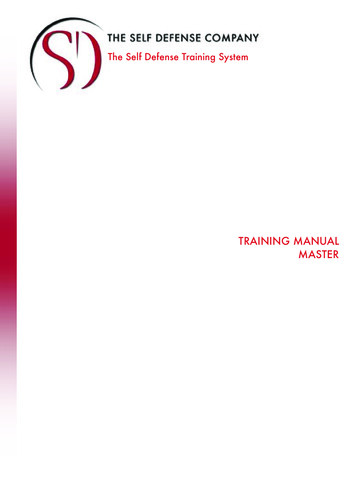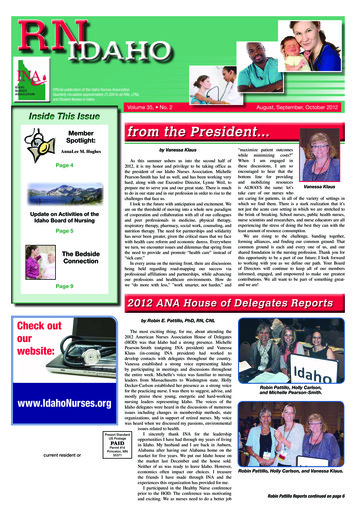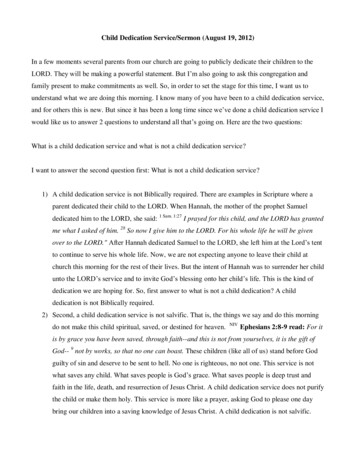![N95 Respirators Training August 2012 Final - HS [Read-Only]](/img/20/n95-respirators-training.jpg)
Transcription
N95 RespiratorsOSHA 29 CFR 1910.134:Respiratory Protection StandardoOSHA’s Respiratory Protection Standard requires thateach employer has a written program which includes:oMedical Surveillance to determine if the employee is fit to wear arespirator.oTraining in the proper use (donning and removing), limitations,and storage of the respirator selected for use.oFit-Test to determine that the respirator selected for use fitsproperly.What is an N95 Respirator?oAir Purifying Respirator certified by the National Instituteof Occupational Safety and Health (NIOSH).oFilter Efficiency of 95% or greater against oil-freeparticulate aerosols.oCan filter contaminants cteriaDusts/FumesMistsN95 respirators are necessary for reducing exposure to these typesof contaminants.1
N95 Respirator Limitationso Proper fit, usage andmaintenance is critical torespirator performanceo Filters particulates onlyo Can not be worn byindividuals with facial hairthat disturbs therespirator seal (beards,goatees, etc.)o Will not protect you fromgases, vapors, oil mists(chemicals)o Must be replaced whenwet, damaged, soiled orcontaminatedo May be uncomfortable ifused for extendedperiodso Cannot be used in anoxygen deficientatmosphereEffective Use of N95Respiratorso Only wear the model and size of respirator that you were fittested with.o If you experience medical signs or symptoms (difficultybreathing, dizziness, etc.) or the respirator malfunctions,leave the work area and remove the respirator when youare no longer exposed to the hazard. Seek medicalattention.Medical Evaluation/Fit TestingWhen is a MedicalEvaluation required?When are a Fit Test andTraining required?o Prior to wearing a respiratoro Prior to wearing a respirator andannually thereafter.o Re-evaluation needed if:o Medical signs or symptomsdevelop which affect one’s abilityto wear a respirator.o Change in workplace conditionscreate a substantial increase inthe physiological burden of therespirator user.o Recommended by health careprofessional, supervisor orprogram administratoro If changes in workplace/activitiesor type of respirator affect fit(Facial/dental changes or bodyweight change of more than 10-20lbs).o Training to be repeated if userdoes not demonstrate requiredunderstanding or skill to wear arespirator.2
Donning an N95Donning an N95o Inspect the respirator for tears, rips,creases or other damage before donning.Replace if damaged, deformed, wet orsoiled.Donning an N95o Cup the respirator in your hand, allowingthe straps to hang below it. The nose clipshould be facing away from you3
Donning an N95o Place the N95 respirator over your noseand mouth with the metal nose clip on top.Donning an N95o Pull the top strap over your head until itrests on the crown of your head aboveyour ears.Donning an N95o Pull the bottom strapover your head until itrests at the back on yourneck.o Individuals with long hair shouldmake sure to lift their hair so that therespirator strap is firmly against theneck4
Donning an N95o Using both hands, startingat the top of the respirator,mold the nose clip aroundyour nose to achieve agood face-to-respirator sealo Do not pinch the nose clipwith one handRespirator Fit Checks:Positive PressurePerform both a Positive Pressure Fit Check and a NegativePressure Fit Check every time the respirator is used.Positive Pressure FitCheck:o Cup your hands over themask.o Exhale normally.o The respirator shouldexpand slightly.Respirator Fit Checks:Negative PressurePerform both a Positive Pressure Fit Check and a NegativePressure Fit Check every time the respirator is used.Negative Pressure FitCheck:o Cup your hands over themask.o Inhale normally.o The respirator shouldcollapse slightly.5
Respirator Fit Checks: LeaksIf air leaks between the face and the face sealof the respirator when performing either fitcheck:o Readjust the nose clip for a more secureseal.o Reposition the respirator.o Perform positive and negative pressure fitchecks again.Removing an N95o If the respirator is contaminated with sputum orother bodily fluids only handle the straps.o To remove:o First: pull lower strap over the heado Second: remove the upper strap.o Discard the respirator if it is contaminated ordamaged.Care of an N95o Must be replaced if wet ordamaged.o Replace if contaminated(i.e. sputum, other bodilyfluids, etc).o Do not crease or foldo Do not write on the mask.6
Storageo Store in a manner that protects againstdamage and contamination (i.e. resealablestorage bag).o Store in a manner that protects thefacepiece from distortion.Next StepsPlease remember the following BEFORE attending a fit testsession:o Fit test participants cannot have facial hair or stubble. If younormally have facial hair, you will need to be clean shaven on theday of the fit test and anytime you wear a respirator.o Please refrain from eating, drinking, chewing gum or smoking 15minutes prior to the fit testing session. Doing these things can affectthe fit test process.o Fit test participants must have already been medically cleared towear an N95 respirator BEFORE the fit test session.7
1 N95 Respirators OSHA 29 CFR 1910.134: Respiratory Protection Standard o OSHA’s Respiratory Protection Standard requires that each employer has a written program which includes: o Medical Surveillance to determine if the employee is fit to wear a respirator. o Training in the proper use (donning an
